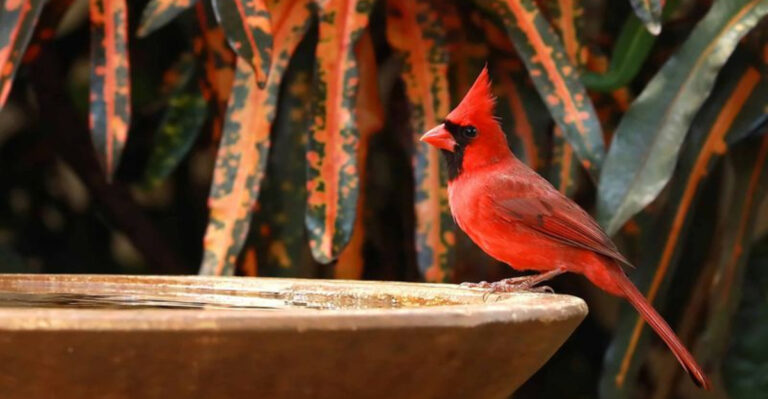15 Incredible Cecropia Moth Facts That Will Amaze You
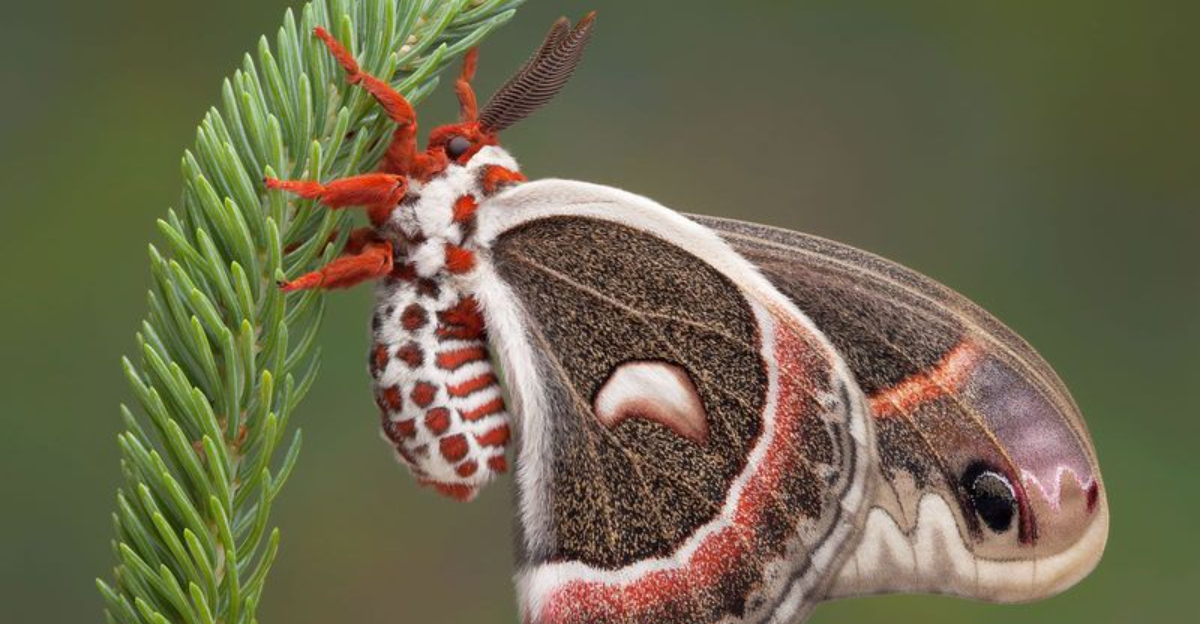
Ever spotted a moth the size of your hand? The Cecropia moth is North America’s largest native moth, with wings spanning up to 7 inches! These stunning creatures lead fascinating but brief lives as adults.
From their impressive size to their unusual life cycle, Cecropia moths are full of surprises that showcase nature’s incredible diversity.
1. Giants Of The Night Sky
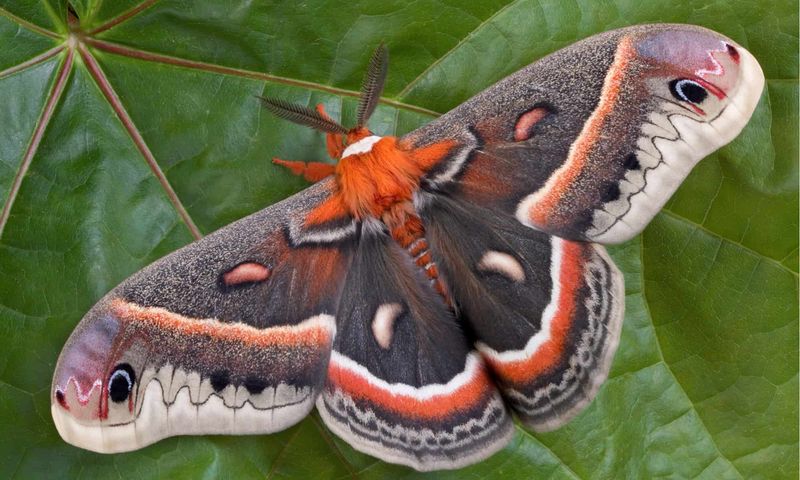
With wingspans reaching a whopping 7 inches, these fluttery giants make other moths look like miniatures! To put that in perspective, they’re about the size of your hand spread wide.
Their impressive size helps them avoid certain predators while making quite the dramatic entrance when they flutter near porch lights.
2. Born Without Mouths
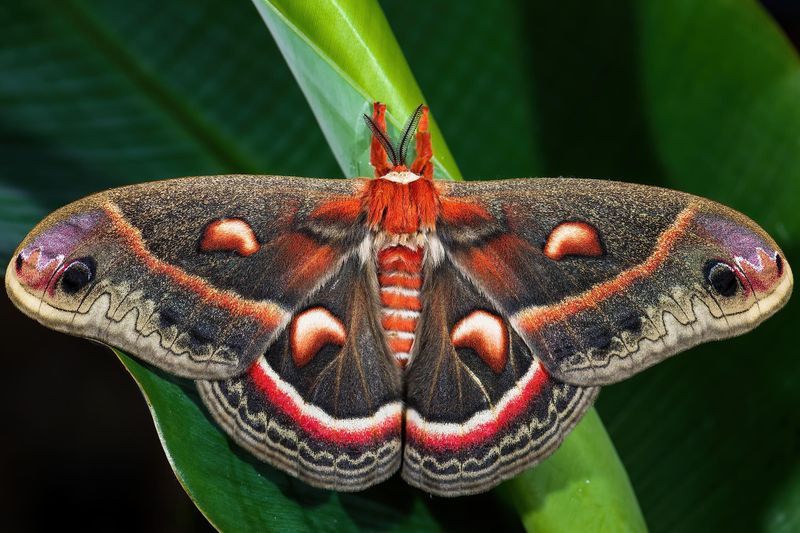
Adult Cecropia moths don’t eat a single bite during their entire adult lives! They emerge from cocoons without functioning mouthparts, living solely off fat reserves stored during their caterpillar days.
Their sole mission? Find a mate and reproduce before their energy runs out.
3. Week-Long Lifespan
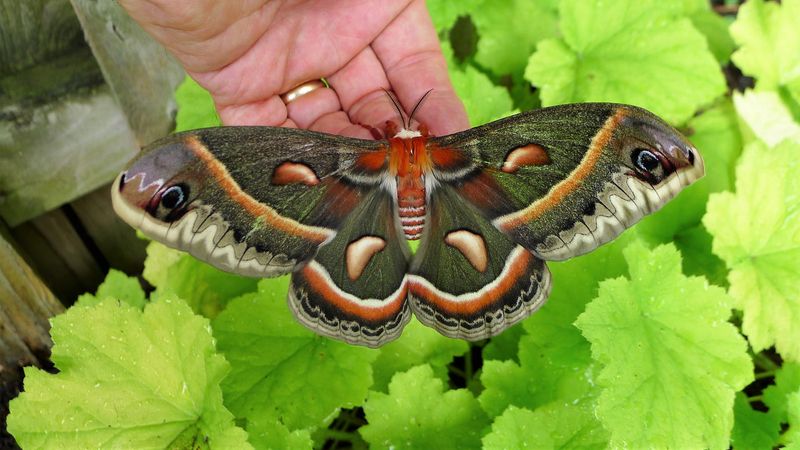
Talk about living fast! Adult Cecropia moths typically survive just 1-2 weeks after emerging from their cocoons. Without the ability to feed, their internal clock ticks rapidly.
During this brief existence, they focus entirely on finding mates and ensuring the next generation.
4. Supersized Caterpillars
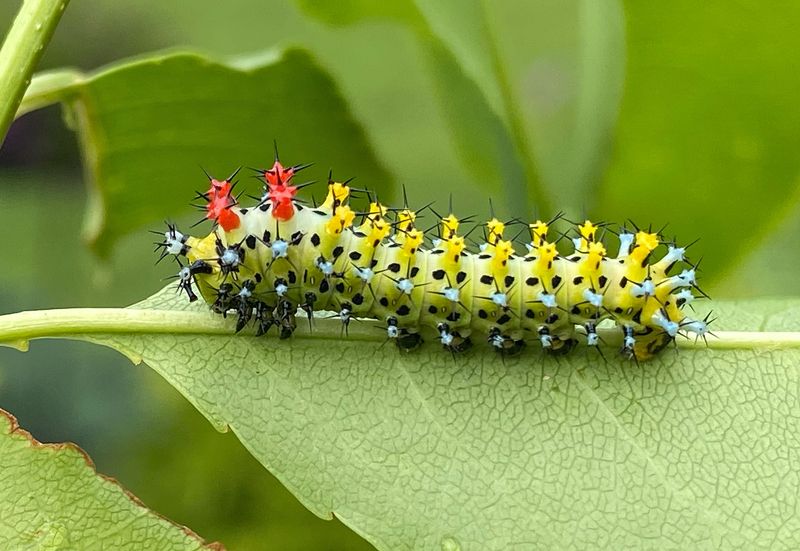
Before becoming elegant moths, Cecropia caterpillars grow to shocking proportions – often over 4 inches long! These chunky, bright green larvae sport blue, yellow, and red knobs that make them look like something from another planet.
They munch through maple, cherry, and birch leaves at an impressive rate.
5. Nature’s Silk Spinners

The silken cocoons crafted by Cecropia caterpillars are engineering marvels! These tough, waterproof shelters protect them throughout winter months.
Native Americans historically collected these cocoons and unraveled them to use the silk for various purposes. Each cocoon contains hundreds of feet of continuous silk thread!
6. Midnight Romance Specialists
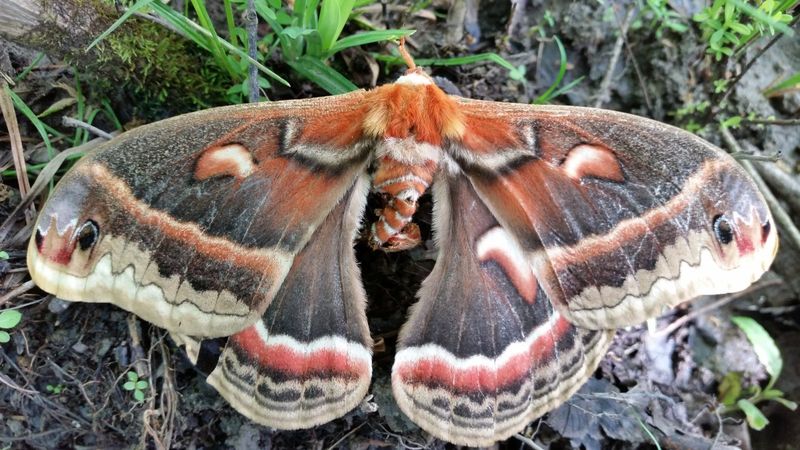
Romance happens after dark for these moths! Females release powerful scents called pheromones that can attract males from miles away.
Males possess enormous feathery antennae specifically designed to detect these love signals. A single molecule of female scent is enough to send males fluttering in her direction!
7. Four-Stage Transformation Artists
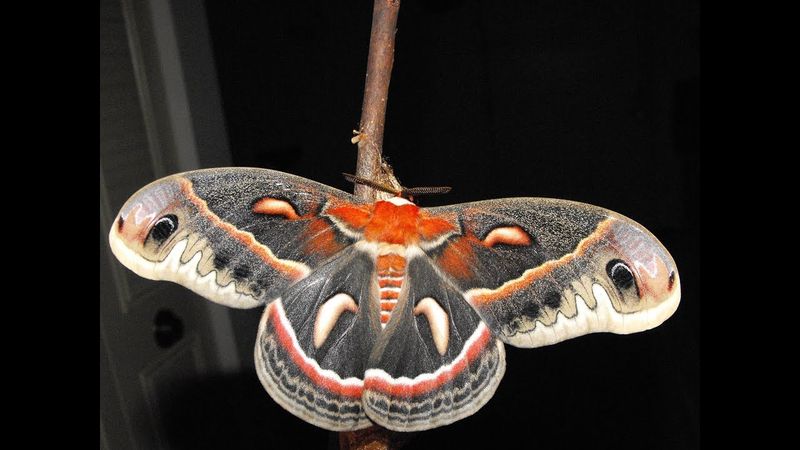
Few creatures undergo such dramatic transformations! From tiny eggs to enormous caterpillars, then to cocoons, and finally emerging as magnificent winged adults.
This complete metamorphosis takes nearly a year from start to finish. The most incredible part? Inside the cocoon, the caterpillar’s body completely liquefies before reforming into a moth!
8. Vibrant Warning Colors
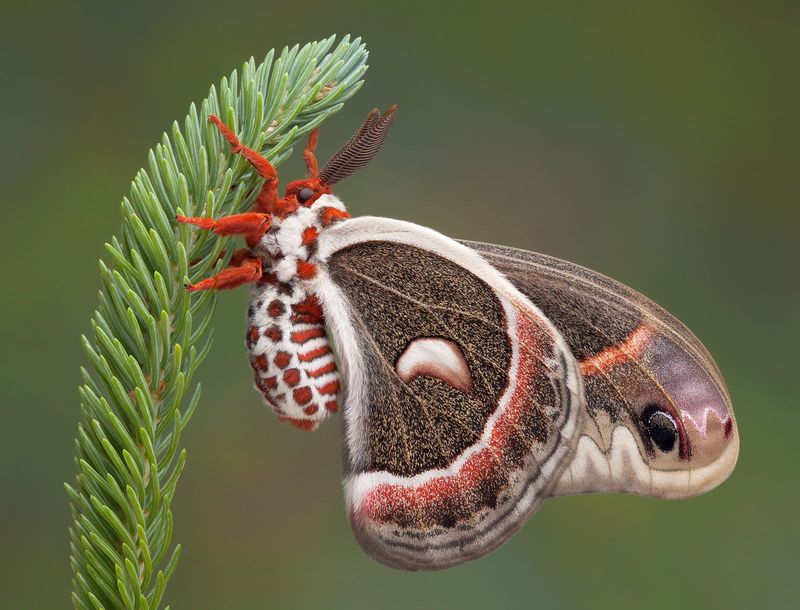
Those stunning reddish-brown wings with crescent moon patterns aren’t just for show! Their bold coloration warns predators that they might not make a tasty meal.
Each wing features eye-like spots that can startle predators during surprise encounters. These visual defenses help compensate for their sluggish flight pattern.
9. Sonic Defense System
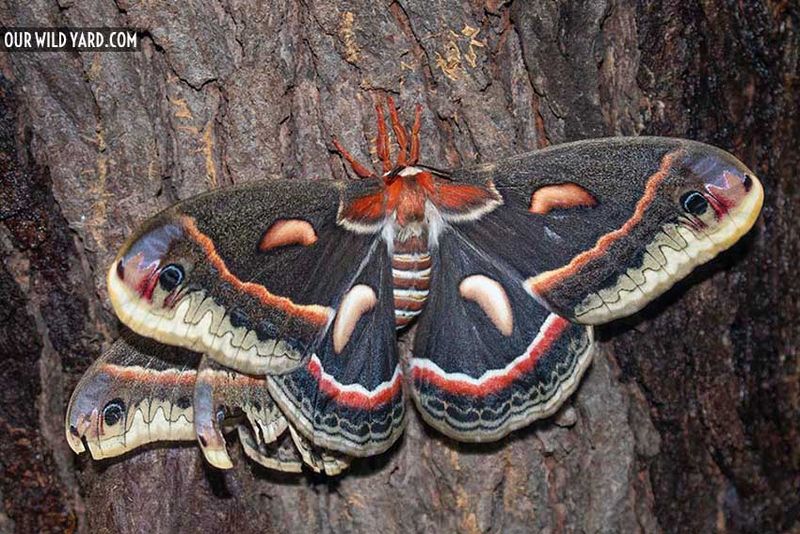
When threatened, Cecropia moths become surprisingly vocal! They produce clicking sounds by rapidly contracting their wing muscles, creating an audible warning to predators.
Research suggests these clicks might mimic sounds made by toxic insects, essentially telling predators: “I’m dangerous – back off!” This acoustic mimicry provides an extra survival advantage.
10. Population Boom And Bust
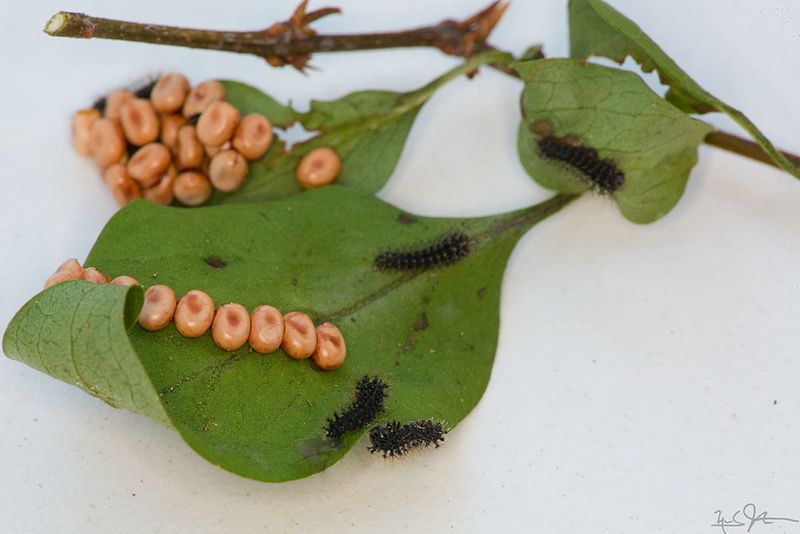
A single female Cecropia can lay over 100 eggs in her brief lifetime! This reproductive strategy ensures some offspring survive despite heavy predation.
Population numbers fluctuate dramatically from year to year. Some seasons bring abundant sightings, while moths seem scarce during others – creating excitement when backyard encounters happen!
11. Surprising Cold Tolerance
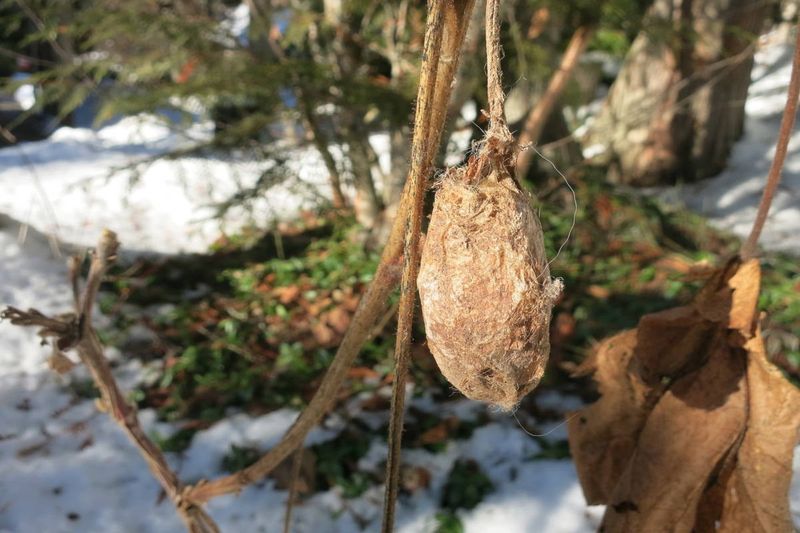
These tropical-looking insects actually thrive in freezing climates! Cecropia cocoons routinely survive winter temperatures well below zero degrees Fahrenheit.
Their bodies produce natural antifreeze compounds that prevent ice crystals from forming in their tissues. This remarkable adaptation allows them to emerge unharmed when spring arrives.
12. Five-Sense Communication
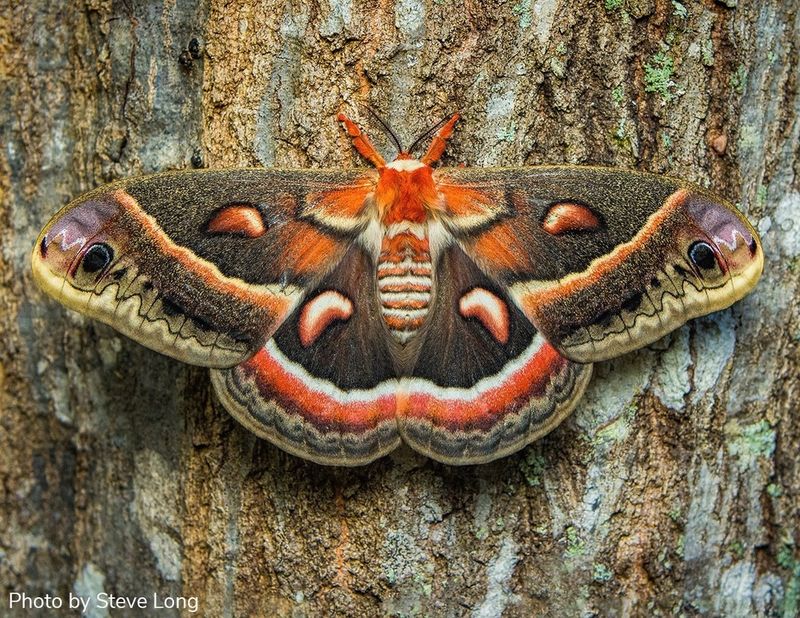
Despite their brief lives, Cecropias communicate through an impressive array of sensory channels! They use visual cues, chemical signals, touch, sound, and even subtle air movements to navigate their world.
Males can detect a single molecule of female pheromone among billions of air molecules – equivalent to finding one specific grain of sand on a beach!
13. Name From Native Legends
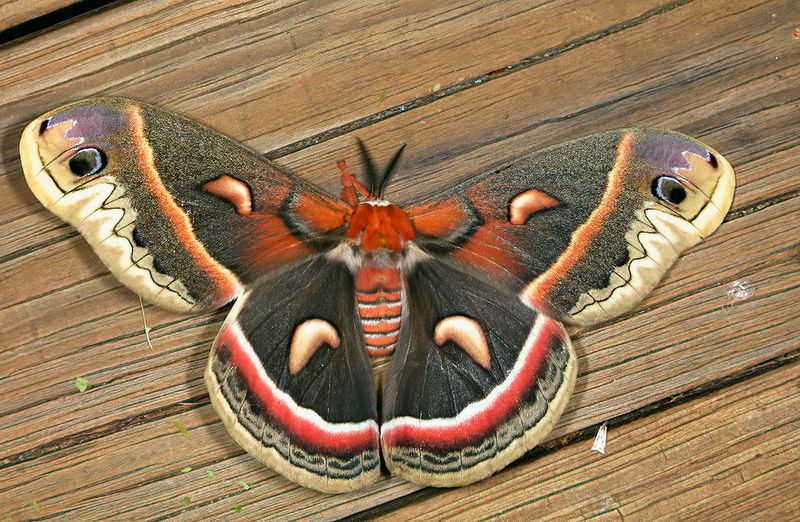
The name “Cecropia” traces back to ancient connections with sacred trees! The genus was named after Cecrops, a mythological figure who was half-human, half-serpent in Greek mythology.
Many indigenous cultures considered these magnificent moths to be spiritual messengers, bringing dreams or carrying souls between worlds.
14. Urban Adaptability Champions
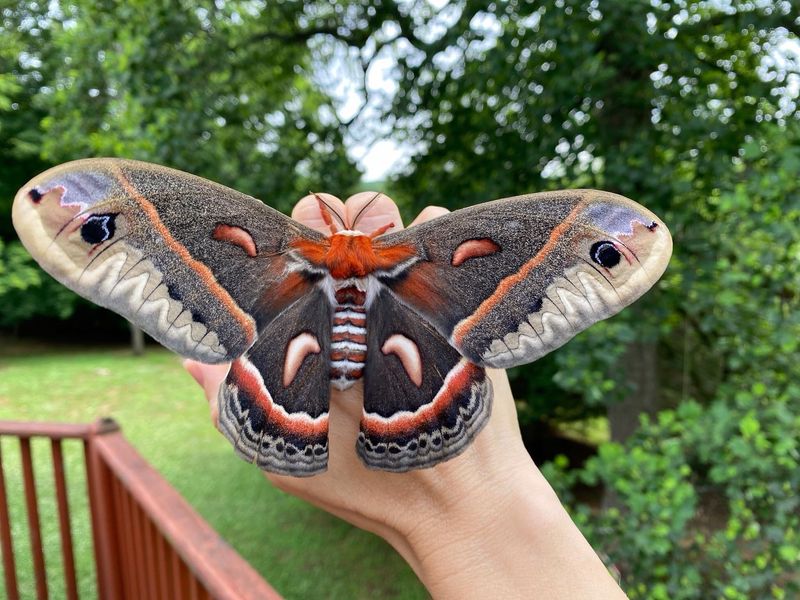
Unlike many insects declining due to habitat loss, Cecropias have adapted surprisingly well to suburban environments! They happily feast on ornamental trees commonly planted in yards and parks.
This adaptability means backyard encounters with these magnificent moths continue despite urbanization. Their flexibility offers hope for insect conservation in changing landscapes.
15. Living Weather Predictors
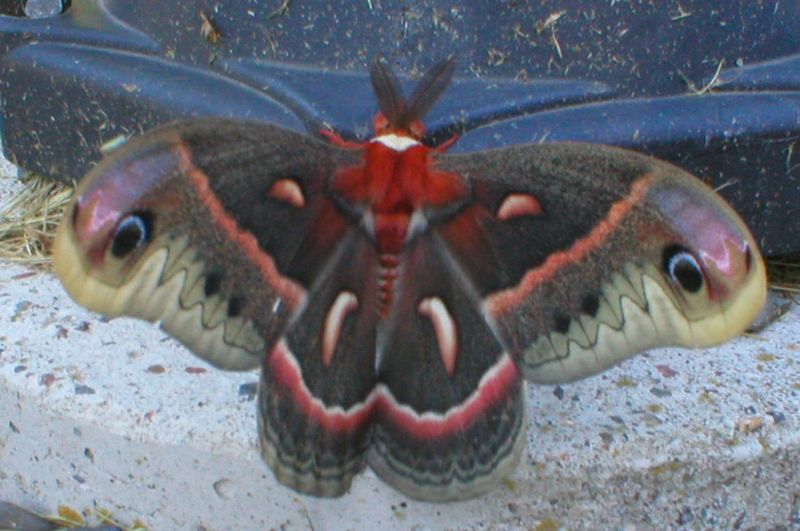
Farmers and nature enthusiasts have long observed Cecropia behavior as weather indicators! Their emergence timing and flight patterns correlate strongly with seasonal changes and approaching weather systems.
Early emergence often signals a warm spring ahead, while delayed appearance might indicate extended cool weather. Their biological clocks are remarkably attuned to environmental conditions.





